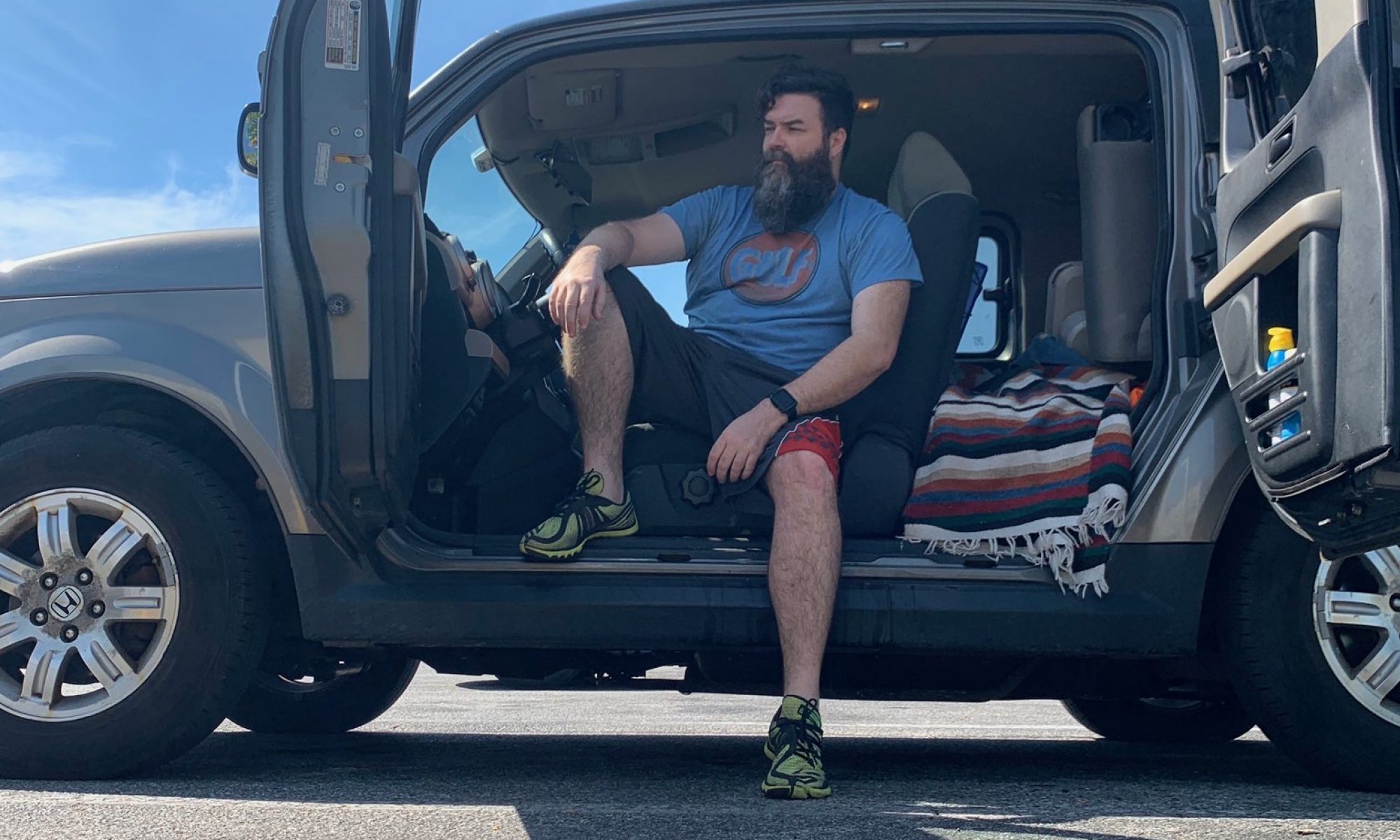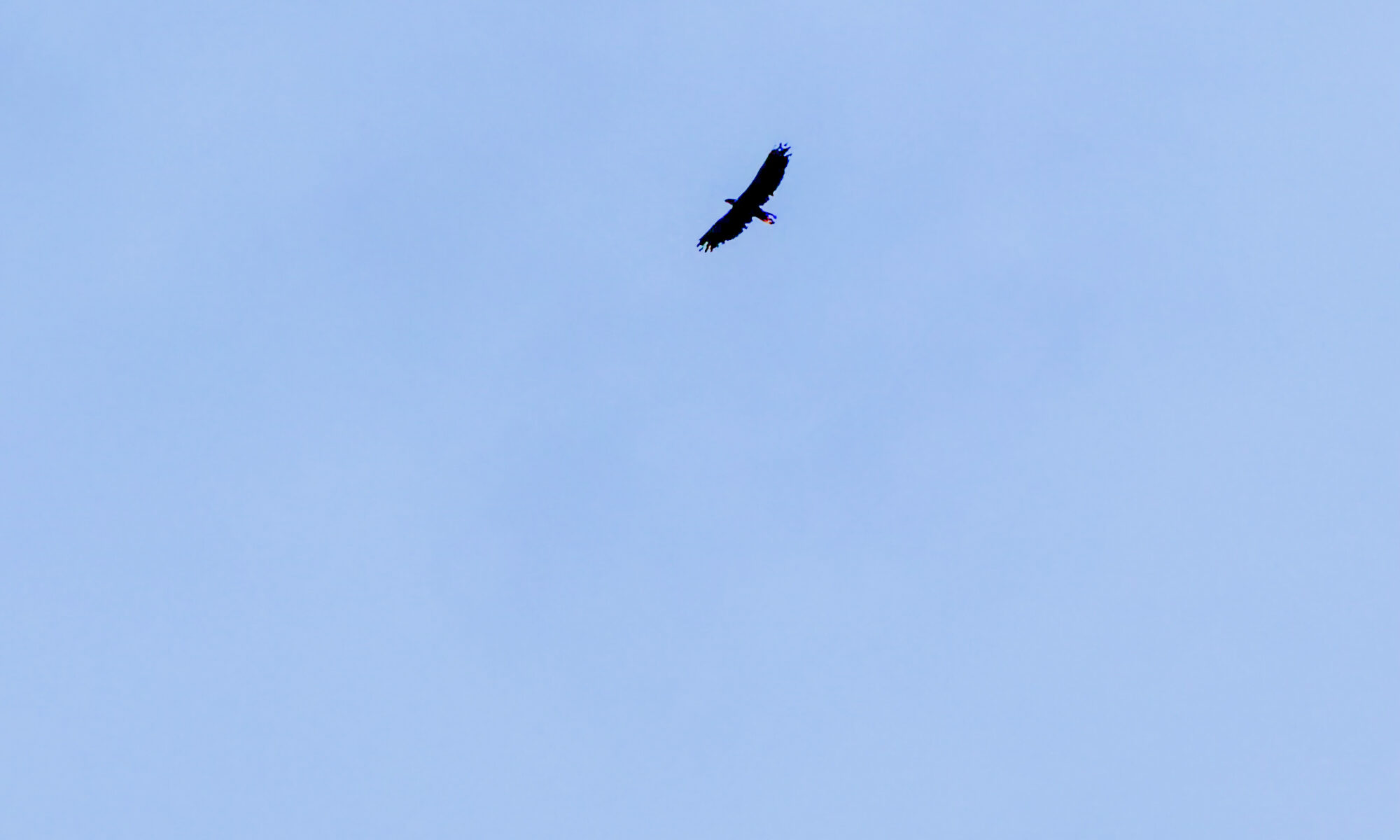Sat, Aug 31
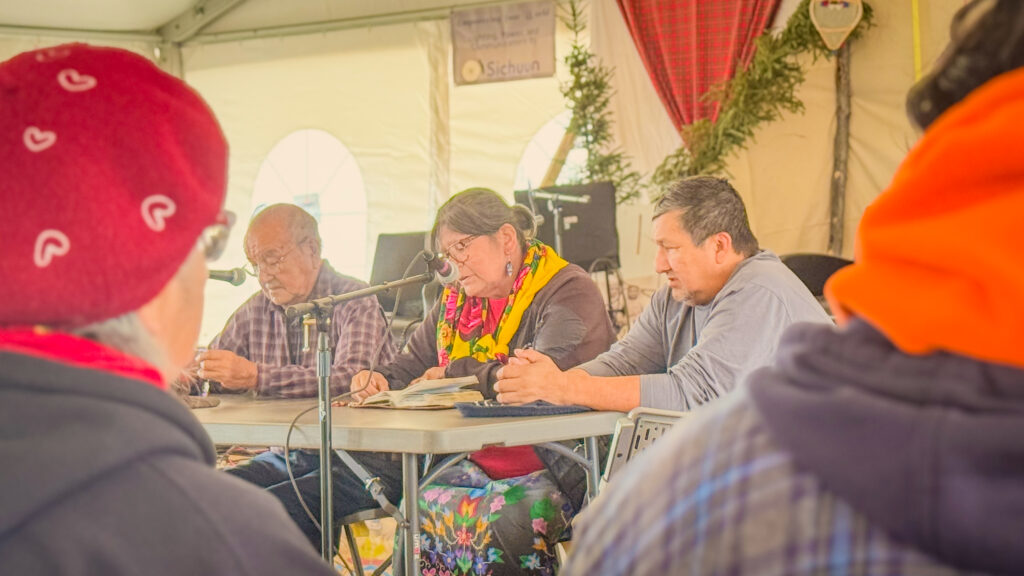
The next morning began with another nation holding mass at the big tent. I love how each nation does things differently, but everyone has appreciated and attended each other’s services.

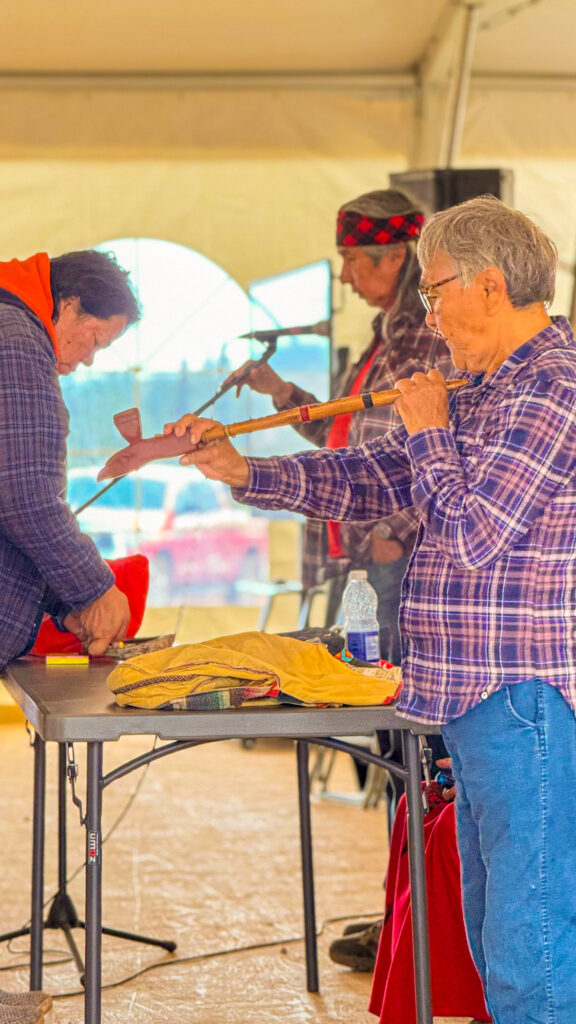
Right after mass, they held a tobacco pipe ceremony, and many of the elders participated. Sage was burning, and some elders began preparing for the Walking Out ceremony.
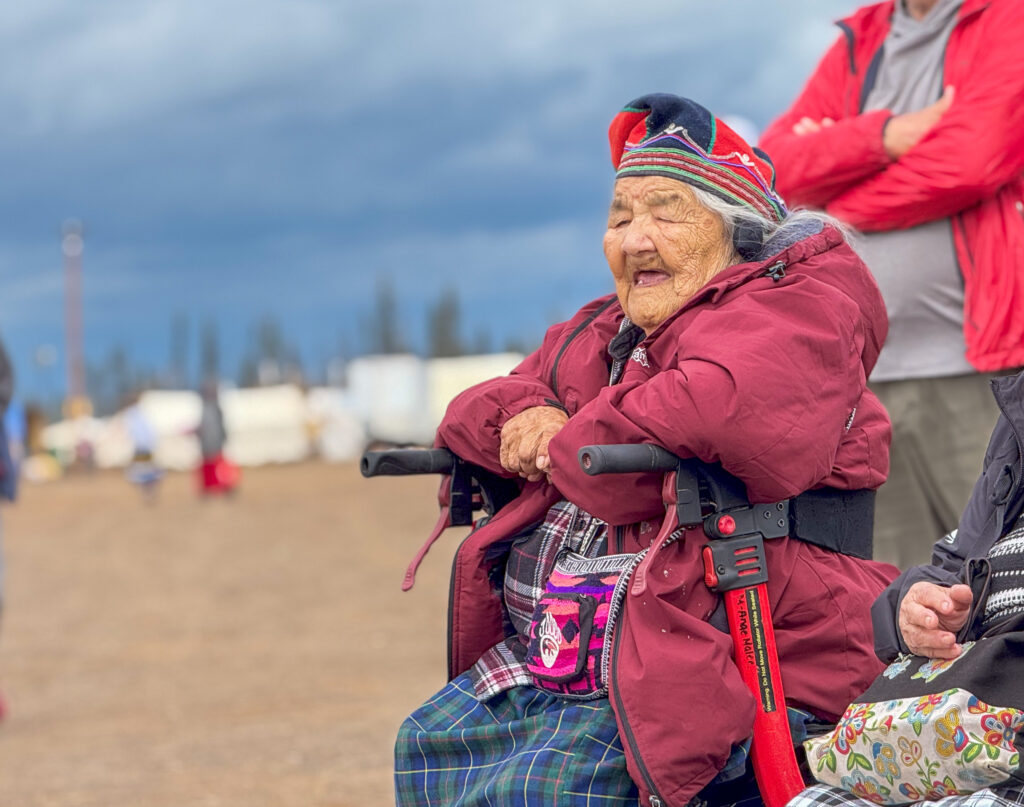
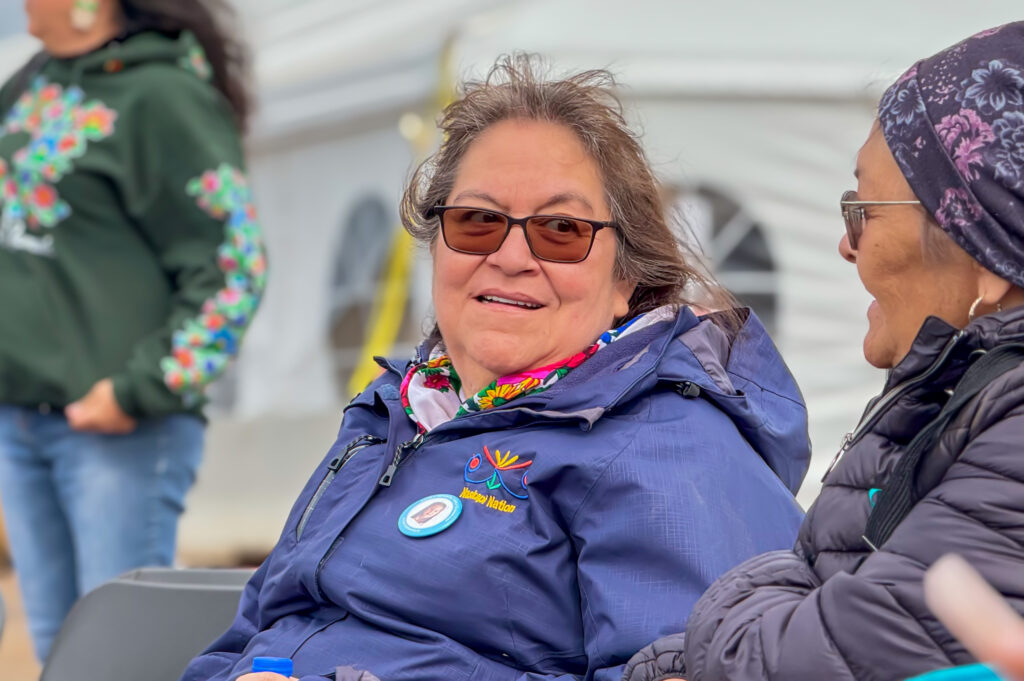
A Walking Out ceremony is a little like a baptism, but it’s typically done for young children.
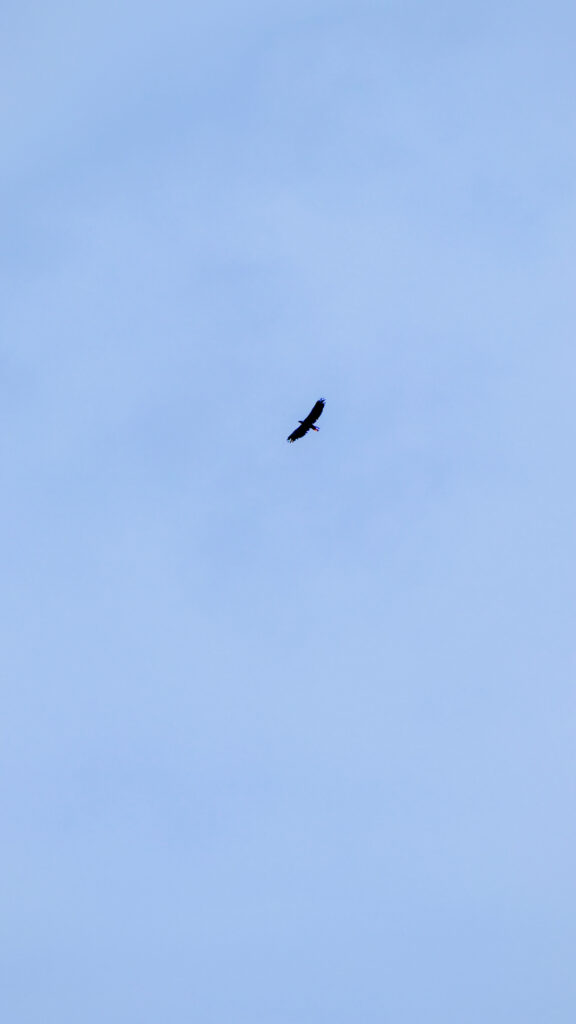
As preparations were being made, a large golden eagle flew in wide, westward circles overhead. One of the elders commented that the camp might have disturbed her hunting grounds but hoped she wouldn’t mind too much.
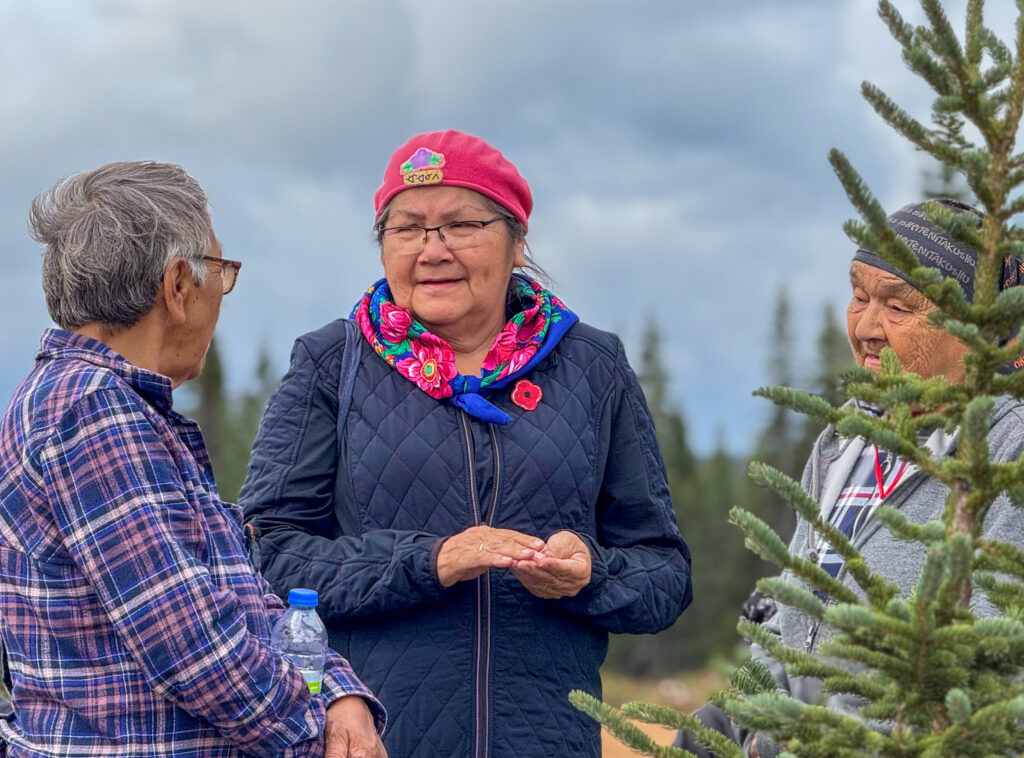
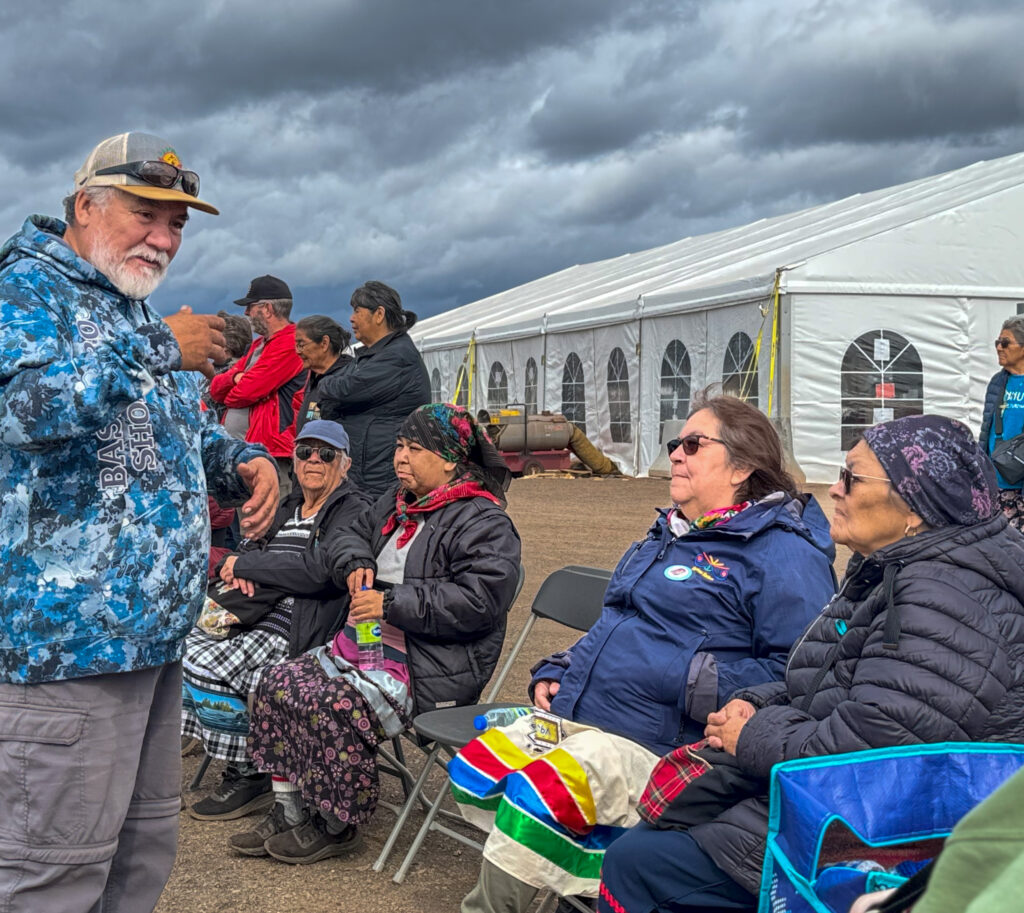
Johnny and Louisa B. Saganash offered to lead the Walking Out ceremony.
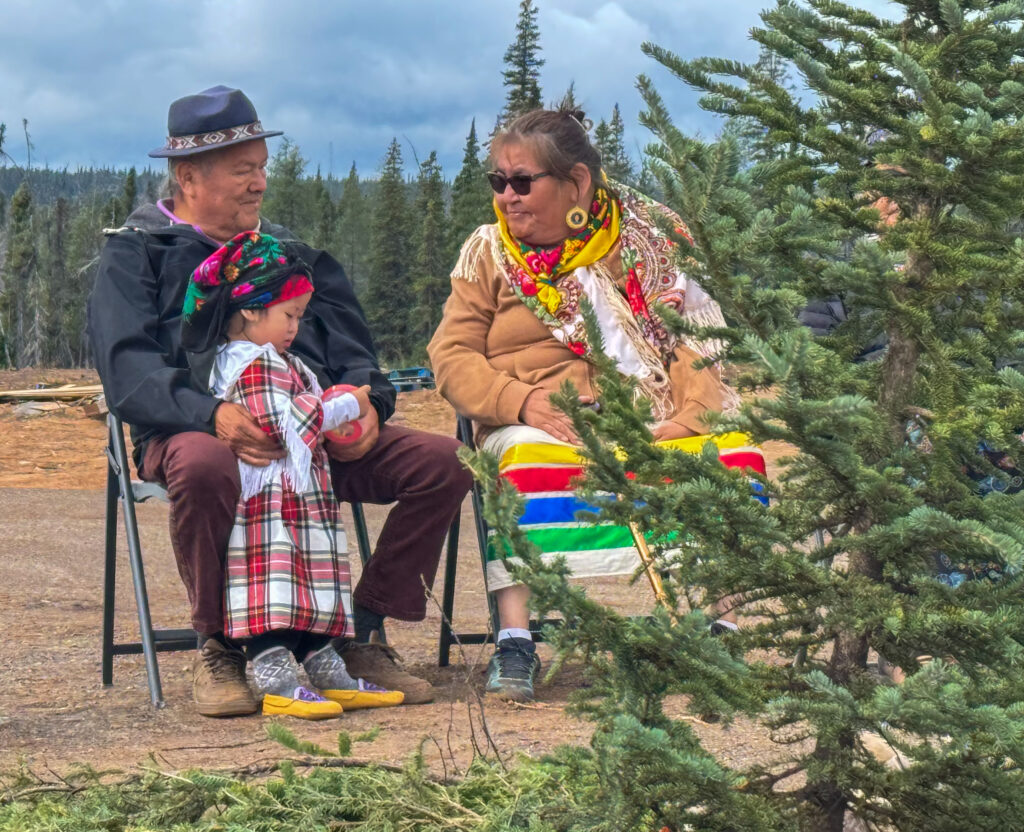
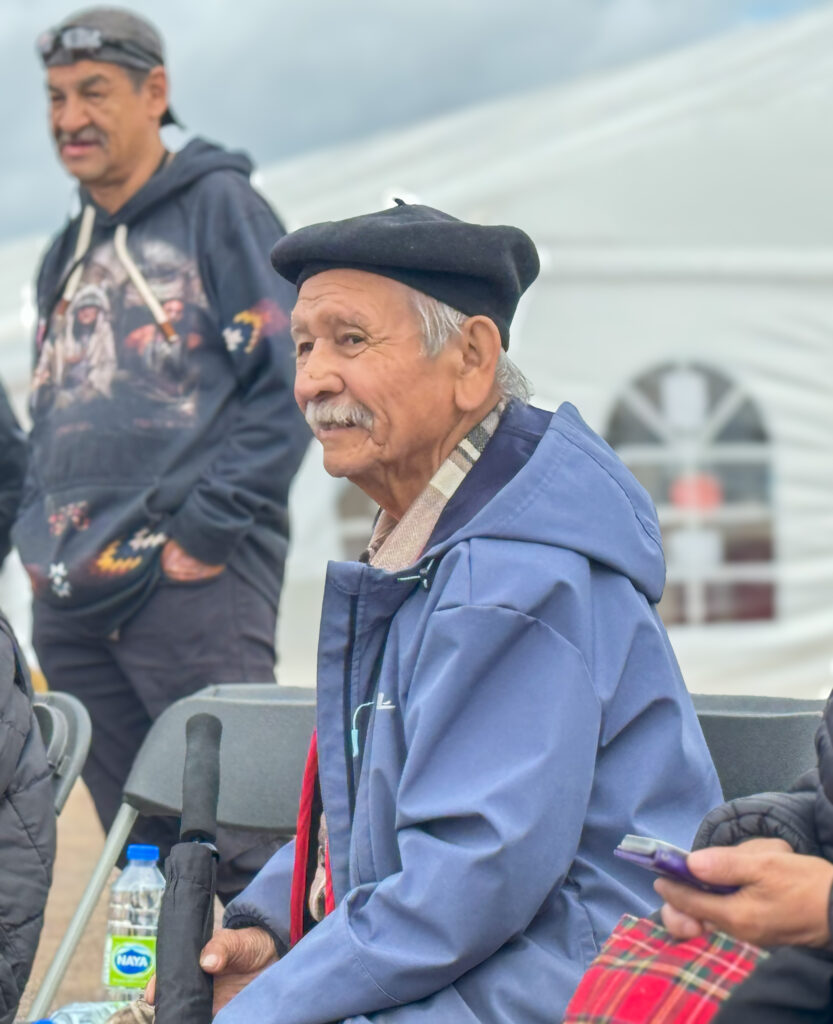


Aunts, uncles, parents, and grandparents all play important roles in the ceremony, as it’s designed to connect the youngest generation with traditional ways.

One of the children, Cohen, was particularly curious about my camera. He was eager to be part of everything, and his energy was infectious.
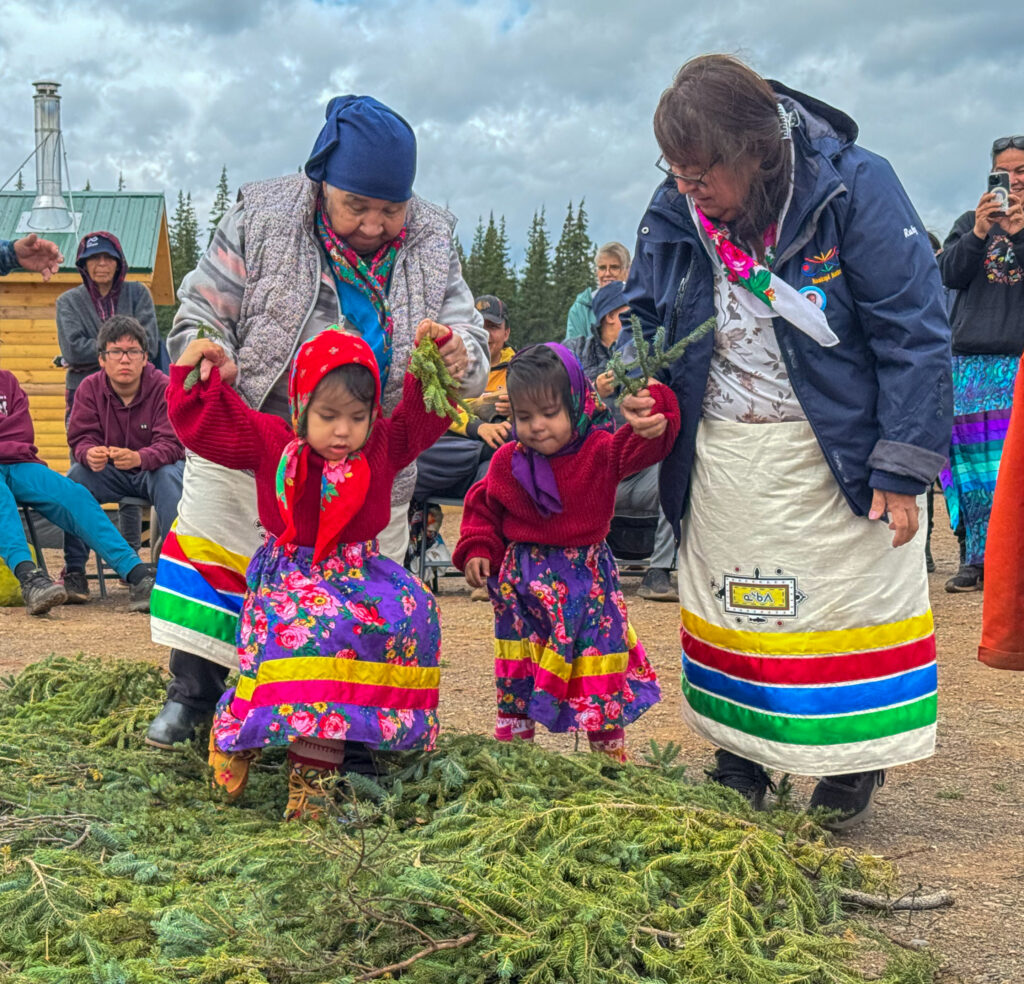
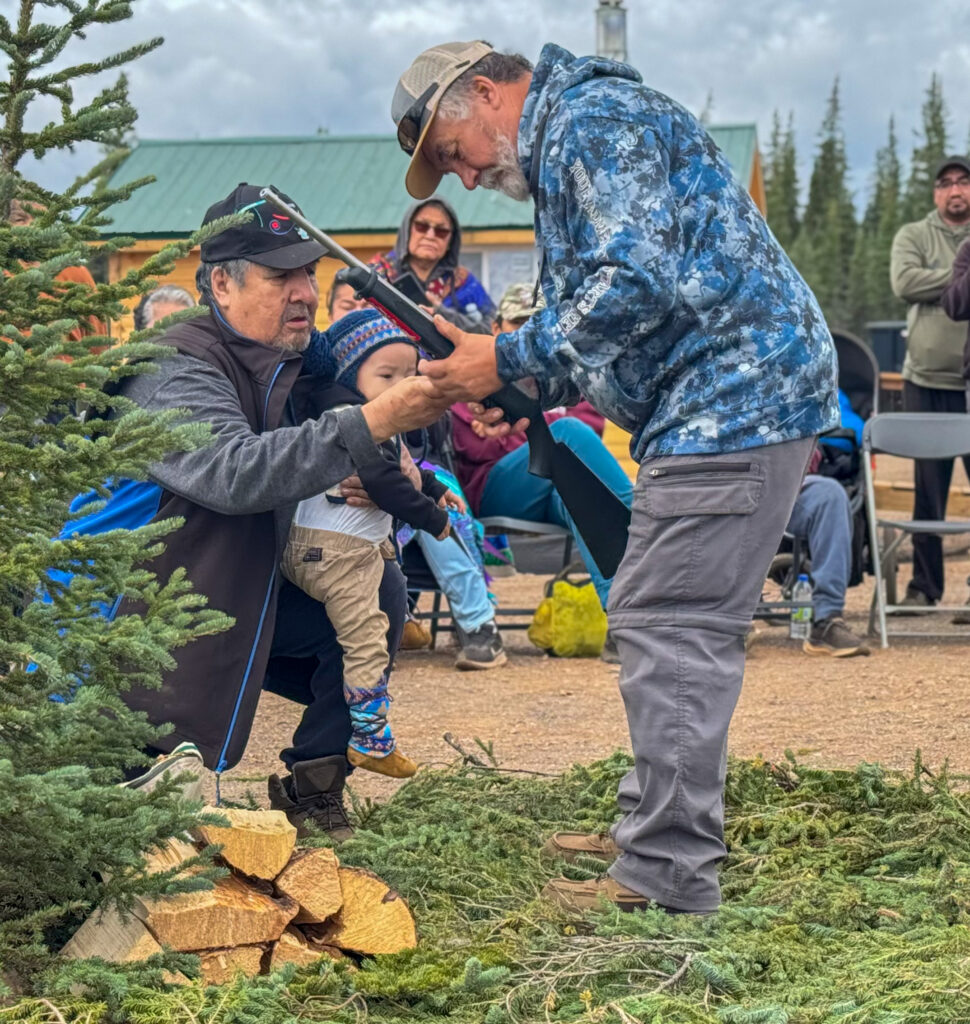
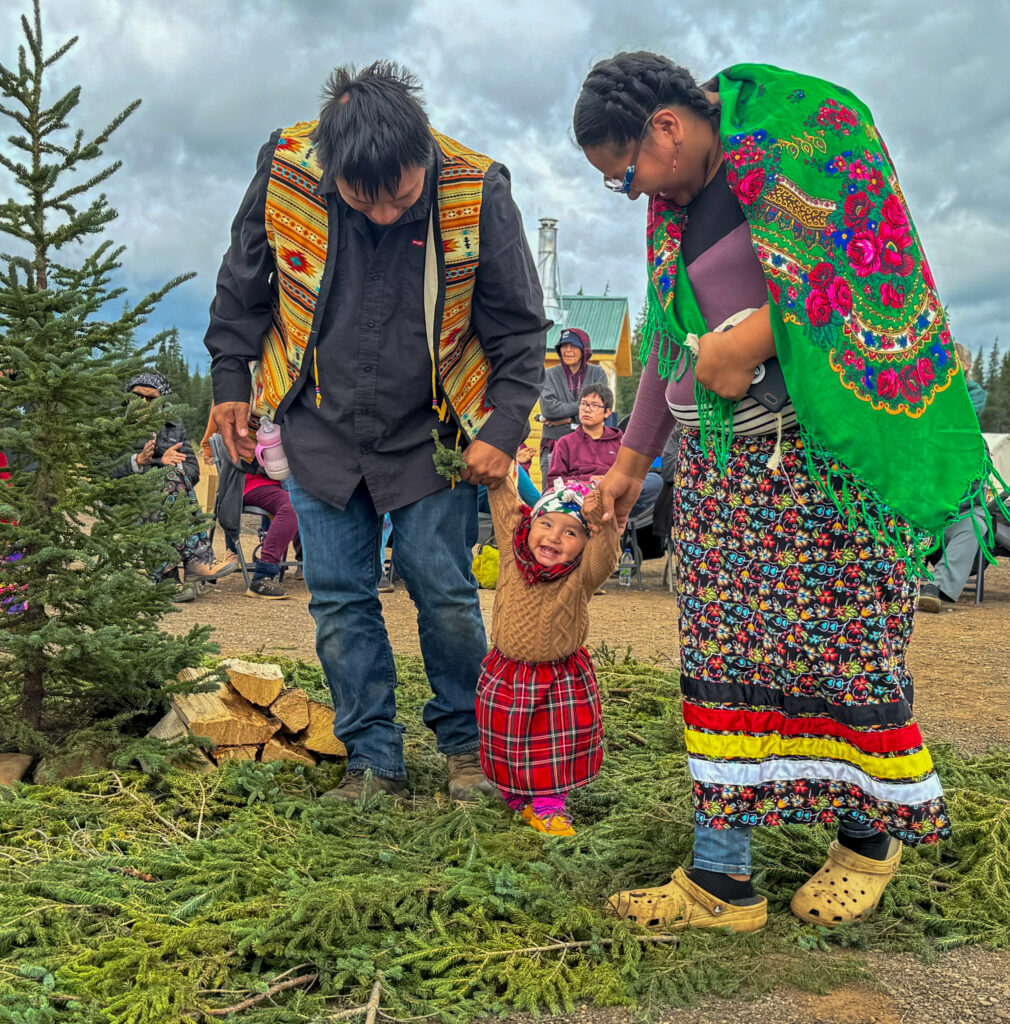

Each aspect of traditional Naskapi life is symbolized in the ceremony. For the boys, a small stuffed caribou represents their first hunt, and for the girls, a branch from a pine tree symbolizes their first tent. Pine boughs are used to line the floors of tents, giving off a fragrant and soft scent. One of the grandfathers helped a young boy fire a blank from a rifle, symbolizing the boy’s first hunt, and this helps ease the pressure for future hunts as they grow older.


The most important part of the Walking Out ceremony is when the child takes their first step off the carpet of boughs. This step symbolizes their journey out into the world, but importantly, they are never alone—family is always there to support them.

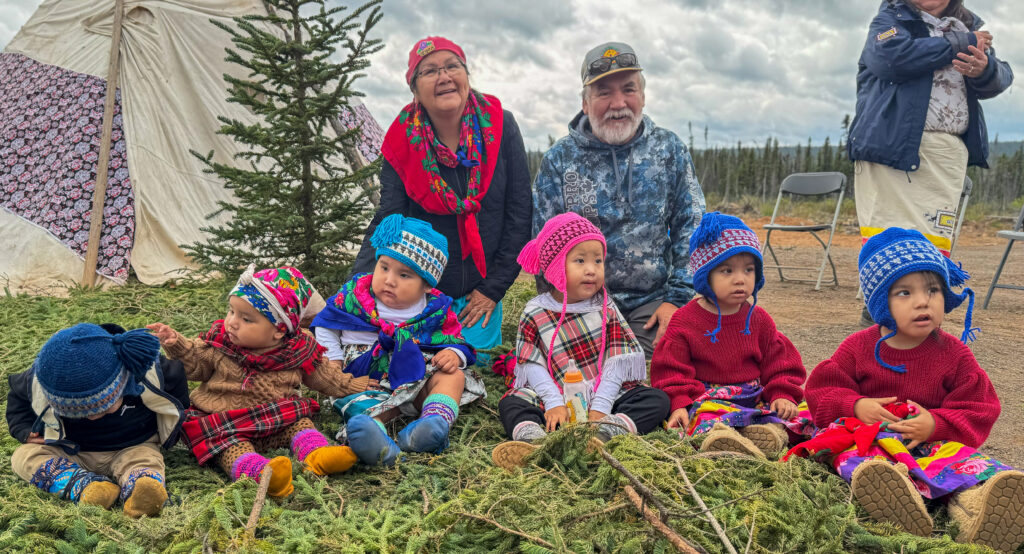
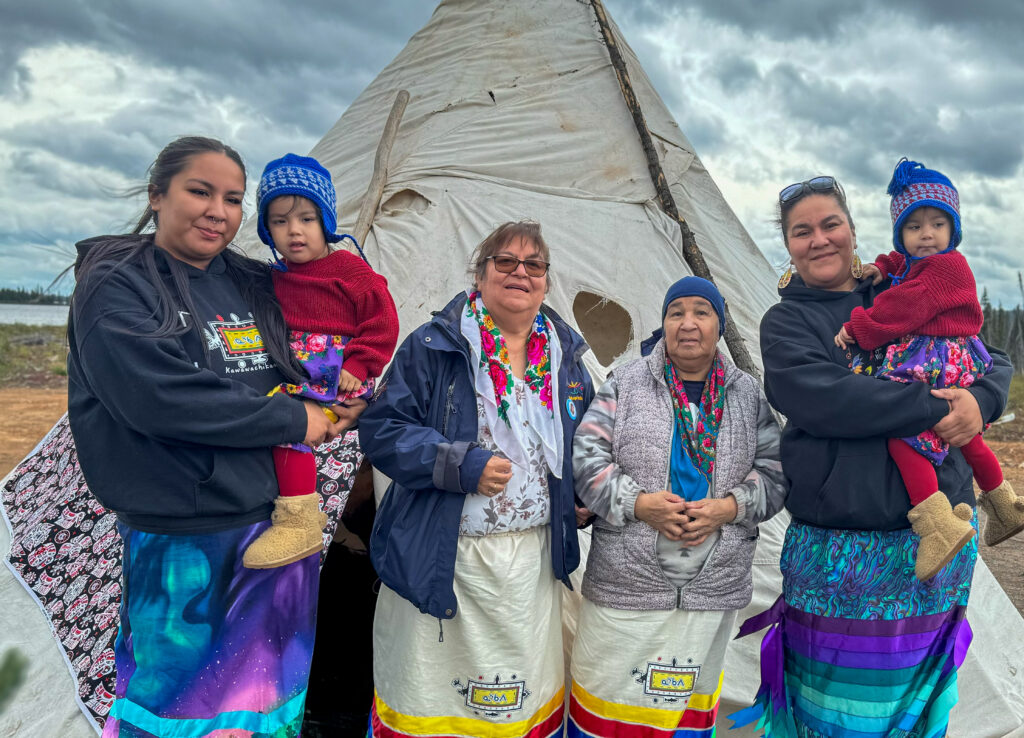
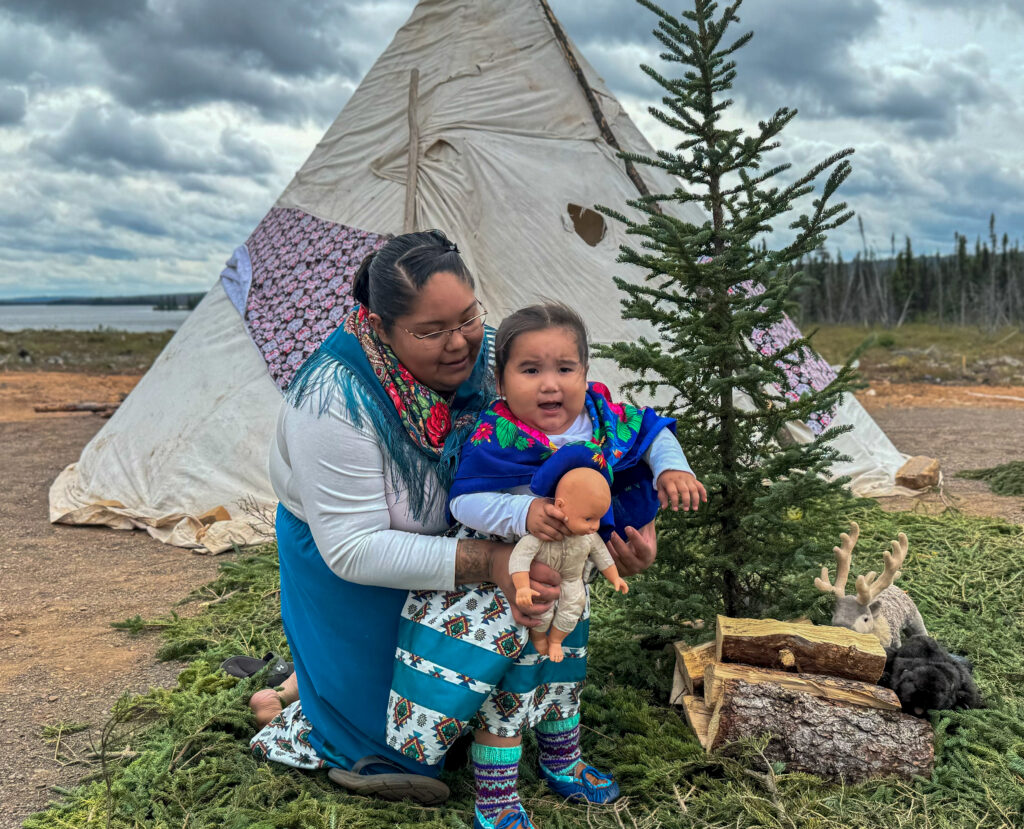
It’s an adorable and joyous event. Elders take pride in dressing their grandchildren in the traditional clothing they wore as children, and the entire family embraces the child with love and pride.
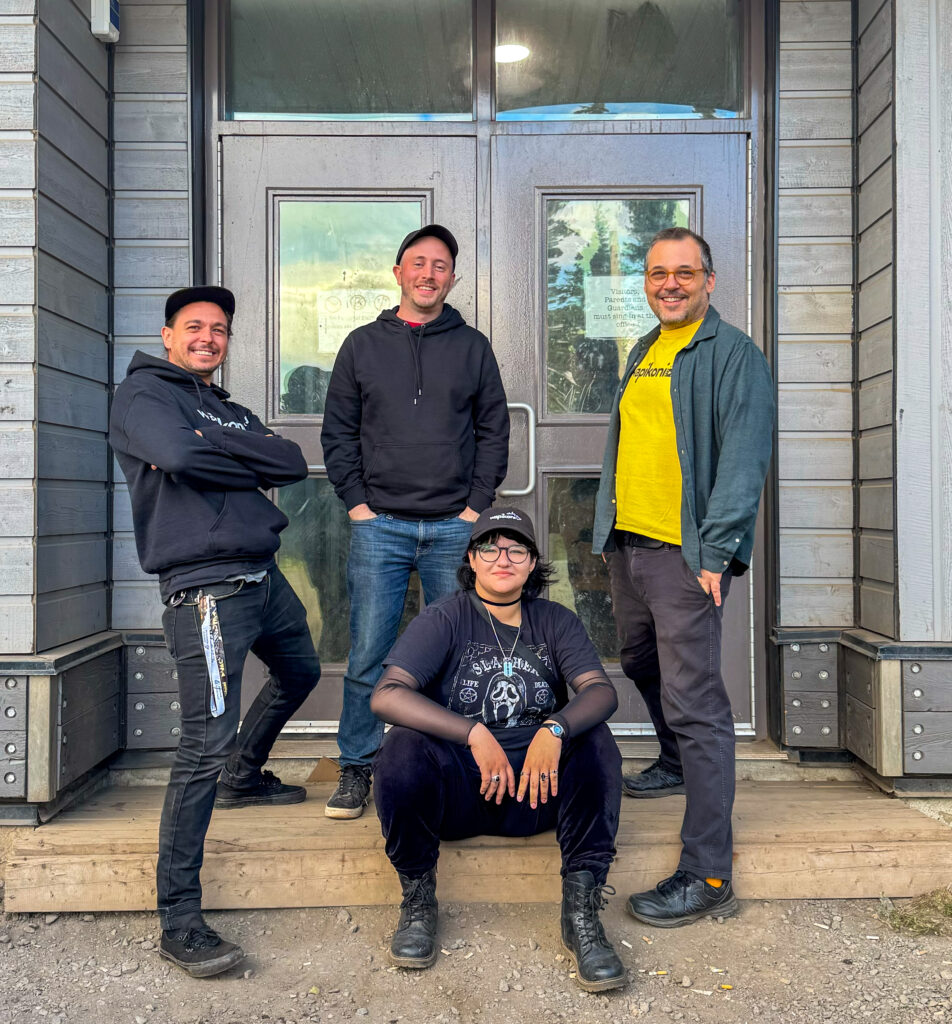
After the ceremony, I headed back to Kawawachikamach to shower, do some laundry, and meet with Rui Silveira, Elayna Einish, and the rest of the Wapikoni team. They’re here to help the Naskapi Nation and Tepatshimuna Matimekush Lac-john Natives record and produce music and videos for free.

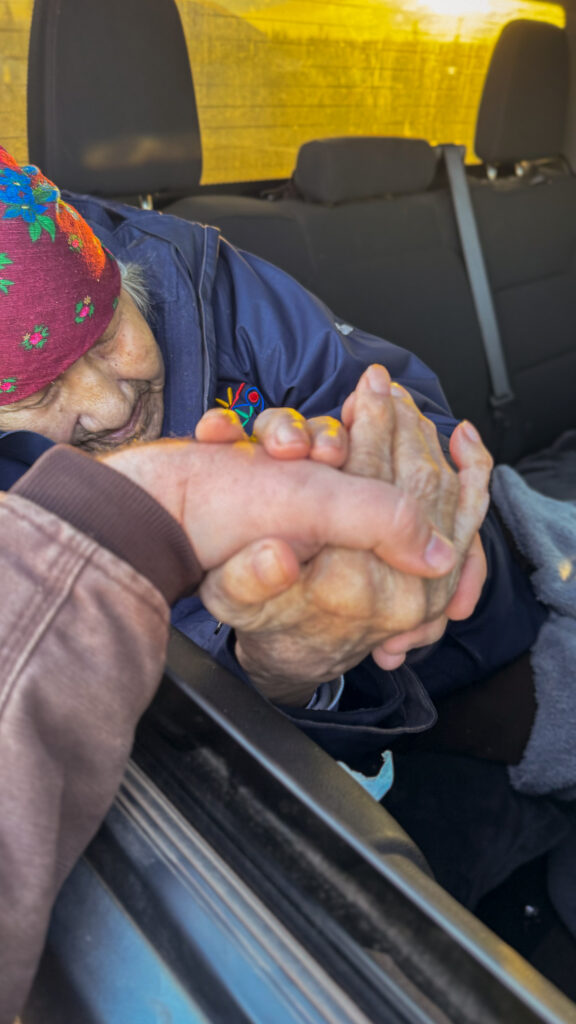
When I returned to the Elders’ Gathering, I ran into David and Susan Swappie riding in Seasi’s truck. Susan, as is her habit, grabbed my hand and wouldn’t let go, repeatedly saying, “ᔄᔾᒥᑎᓐ, ᔄᔾᒥᑎᓐ, ᔄᔾᒥᑎᓐ… (I love you, I love you, I love you)” in Naskapi.
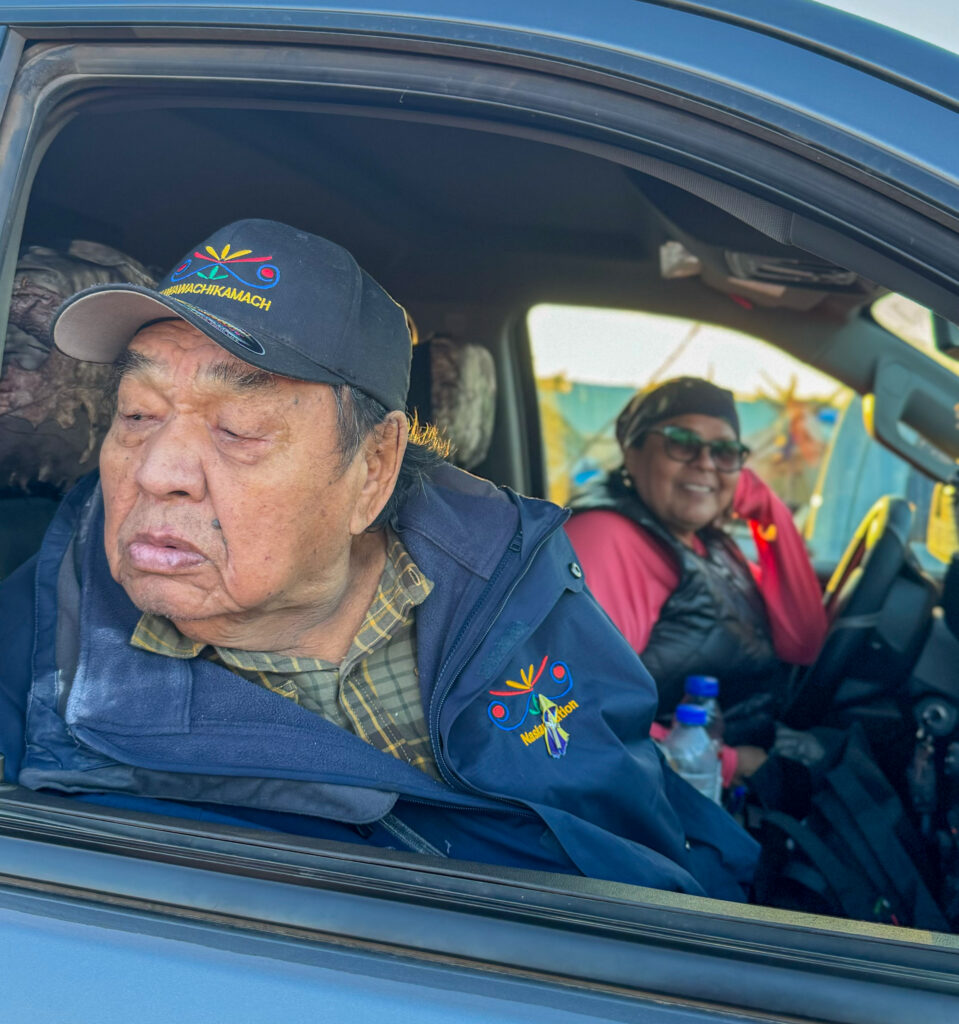

They hadn’t eaten yet, but Seasi told me she had some submarine sandwiches. After I laughed at her for feeding them “white people food”, I ran and got them plates of fish, wapachi, and fresh bannock.
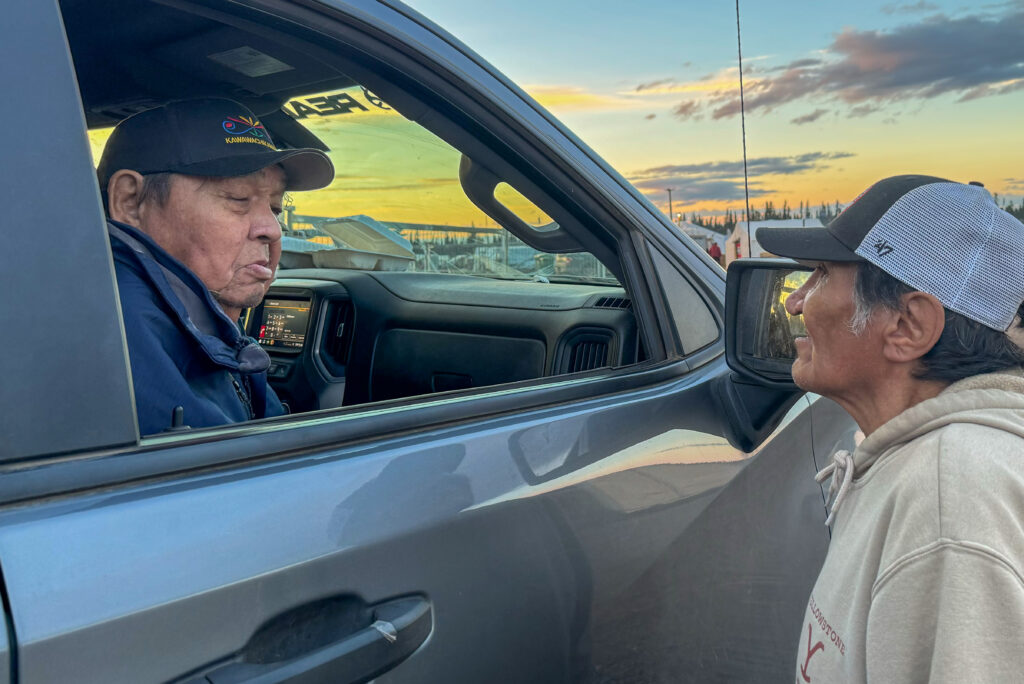

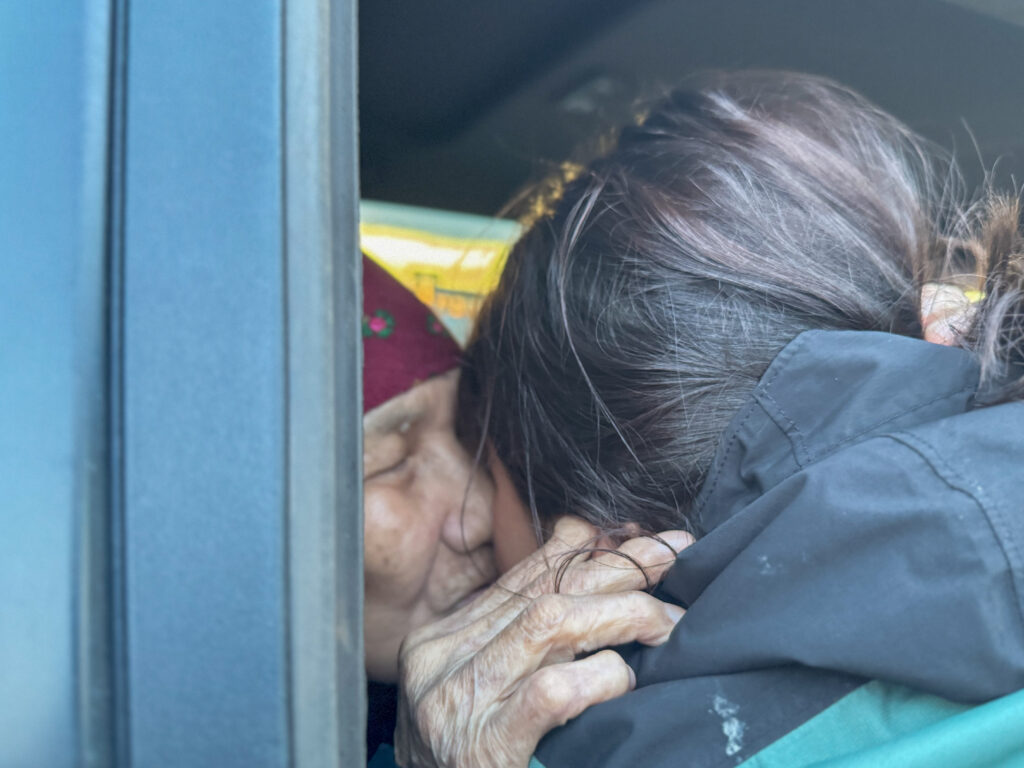

We sat together for a while, talking, while David watched the crowds, calling over family and friends to chat with them. It was good to see them out and enjoying the gathering.
Later that evening, the Elders Gathering beauty contest took place, where couples from each community competed in a hilarious dance-off. It was lighthearted fun, and everyone had a great time laughing and cheering.
I ended the night practicing recording the northern lights as timelapse.
